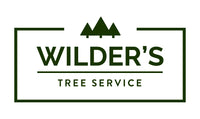Trees are undoubtedly beautiful and beneficial, but it's essential to recognize that they can also pose risks, particularly when they become hazardous. Hazardous trees can threaten property, infrastructure, and even human lives. That's why it's crucial for homeowners to understand tree risk assessment and take proactive measures to identify and manage hazardous trees.
In this blog post, Wilder's Tree Service aims to shed light on tree risk assessment, equipping homeowners with the knowledge to identify and address potential risks associated with their trees. Let's explore the importance of tree risk assessment and the steps involved in managing hazardous trees.
-
What is Tree Risk Assessment? Tree risk assessment is the process of evaluating trees to identify potential hazards and assess the level of risk they pose. It involves a systematic examination of tree health, structural integrity, and surrounding conditions to determine the likelihood of failure and the potential consequences if the tree were to fail.
-
Signs of Hazardous Trees: Understanding the signs of hazardous trees is crucial for early detection and intervention. Some common indicators include:
- Dead or decaying branches
- Cracks or splits in the trunk or major limbs
- Leaning or significant trunk lean
- Signs of root damage or instability
- Fungal growth or signs of decay
- Excessive deadwood or canopy dieback
- Pest infestations, such as wood-boring insects
- Proximity to structures, power lines, or high-traffic areas
-
The Importance of Regular Tree Inspections: Regular tree inspections by a qualified arborist are essential for early identification of potential hazards. Professional arborists have the expertise to spot signs of tree problems that may not be apparent to the untrained eye. They can assess the overall health and structural stability of trees and provide recommendations for management or mitigation.
-
Tree Risk Management: If a hazardous tree is identified, appropriate management strategies can help mitigate the risk. Depending on the severity of the hazard, options may include:
- Pruning to remove dead or decaying branches
- Cable or bracing systems to reinforce weak branch unions
- Installation of lightning protection systems for trees in high-risk areas
- Selective removal of hazardous limbs or sections of the tree
- Complete tree removal if the risk cannot be adequately mitigated
- Engaging Professional Tree Care Services: Tree risk assessment and management are best left to trained and experienced professionals. Engaging the services of a reputable tree care company, such as Wilder's Tree Service, ensures that the assessment is conducted accurately and appropriate actions are taken to address any identified risks. Professional arborists have the knowledge, tools, and expertise to make informed decisions and carry out the necessary tree care procedures safely.
Tree risk assessment is a vital process for homeowners to ensure the safety of their property and loved ones. By understanding the signs of hazardous trees, scheduling regular inspections, and engaging professional tree care services, homeowners can effectively identify and manage potential risks.
Wilder's Tree Service is committed to helping homeowners assess and address tree hazards, ensuring the well-being of both people and property. Remember, when it comes to tree risk assessment, it's better to be proactive and take necessary action to mitigate risks before they become emergencies.

